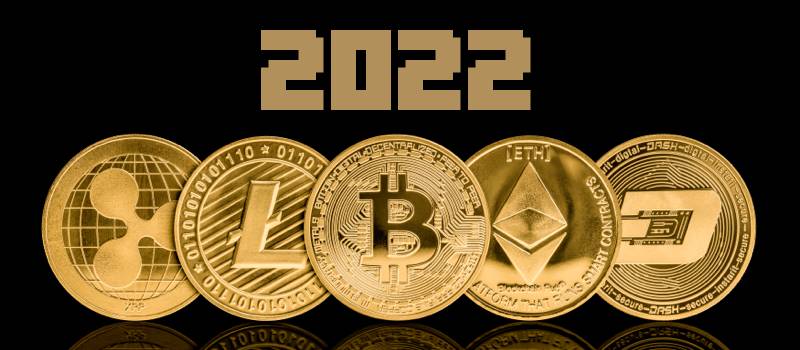It is quite important the world understands that Ripple, together with the XRP army, are hitting hard at the U.S. Security and Exchange Commission (SEC) like never before. Jake Chervinsky, the U.S. Blockchain Association’s policy chief, has stated in a recent tweet that irrespective of how the crypto community views Ripple as a company, there are several issues of utter importance which everybody would admit. One is that Ripple is giving the regulator an extremely tough time, even tougher than Tesla’s chief, Elon Musk, the world’s richest person. Secondly, Chervinsky noted: “They’re (Ripple and XRP army) the leading dispute on securities law, if only b/c they’ll fight to the death unlike those who caved & settled.” For context, in the past, the SEC had filed lawsuits against some companies and threatened others with serious litigation. In many of those situations, the defendants conceded, fearing the rigor of state regulators. This time, Ripple has been pushing hard at SEC from the very start: hard enough where most who know the case well would say they have maintained the upper hand in the proceedings throughout the lawsuit.
Of importance to note is that at the time the SEC had initially filed its lawsuit against Ripple, many had thought it was certainly Ripple that was in hot water. Since then, Ripple has turned the tables and many observers believe it is now the SEC itself that is in hot water. Recently, the court has denied SEC’s “privilege” argument to protect certain documents. As a consequence, the SEC is now compelled to produce a draft email, relating William Hinman’s 2018 speech. Many in the community are considering the recent court ruling a major victory for Ripple. Why is the outcome so crucial? If Ripple wins the lawsuit, there would be a great loss of face for SEC. On the contrary, if SEC succeeds, the entire crypto community would be under serious threat.

Analysts Give Their Summaries and Predictions for Crypto In 2022 – More Bloodshed?
Even though Bitcoin and other cryptocurrencies have been able to surge in value in recent years, generating billions of dollars for investors and promising a new kind of wealth, with the recent downturn due to regulatory pressure on cryptocurrencies, many analysts are suggesting that cracks might soon appear in the armor. In the federal digital currency report released last Tuesday, analysts said they expect cryptocurrencies to encounter challenges from regulation over the coming years. The report said that U.S. lawmakers and financial regulators have been looking into the legality of cryptocurrencies, even as regulators in several countries have already warned investors against investing in digital assets. It suggested that many investors have been buying into digital currencies only because they are able to easily monetize them with little work or effort. Recently, U.S. regulators have been ramping up their warnings against such easy money. The report went on to say that such easy money alone is not enough to justify the sky-high valuations of cryptocurrencies, and that while blockchain technology may be one of the biggest catalysts for large future innovations, at current prices, it can’t live up to the expectations associated with cryptocurrencies.
“The cryptocurrencies have no material impact on the real economy and the banking system, so valuations have been predicated upon a hoped-for financial revolution that we do not believe will happen,” the report said. Cryptocurrencies like Bitcoin are created through a process known as “mining,” which involves using computers to solve difficult mathematical puzzles. As more and more people mine for cryptocurrencies, it has fueled a massive boom in computing power and innovation. Cryptocurrency has received an incredible amount of attention in the last year, both in media and online, in general. While there has been a lot of hype and excitement around the market, there have also been many setbacks. The cryptocurrency market is a volatile one, and it will continue to be so for the foreseeable future. With this in mind, it’s worth taking the time to look back at the year that has been and see just what has happened.
Fundamental shifts in economics and technology have been the driving force behind the cryptocurrency market, and overall, Bitcoin has performed almost exactly as expected, given a number of fundamental factors. These factors include the lack of regulation, the uncertain regulatory environment, and the volatility of its value. But while most other cryptocurrencies have mirrored Bitcoin’s performance in a broad sense, there have been many exceptions. Some currencies have become more stable than others; some have increased in value so much that they are now viable options as a form of payment, while others have utterly collapsed. As usual, Bitcoin is the market leader in terms of market capitalization, but there have been two new challengers to its status: Ethereum and Ripple. Bitcoin is still the largest cryptocurrency when measured in terms of market cap, and though it may decline, it will still be the largest for many years to come.
Although there have been many currencies like Bitcoin, none of these have been as profitable to mine as Ethereum. The crypto community has been buzzing about this new form of currency, and it’s only getting bigger. It uses the same blockchain technology that Bitcoin does but goes a step further by allowing users to create their own programs and applications within their platform. These apps are known as “smart contracts” and have been making waves in the crypto community lately. In order to create a secure blockchain, you need computers all over the world competing with one another. This means that every computer on their network has to make complex calculations in order to update the global ledger. This process consumes a lot of time and hardware, making it difficult for average users to compete with professional mining operations.

Ethereum Price Prediction: ETH/USD Approaches $3000 Support
Ethereum Price Prediction – January 18: Ethereum price predictions reveal that ETH is approaching a crucial support level which could take the second largest digital asset by market cap to the downside. ETH/USD Market Key Levels: During the middle of last week, Resistance levels were $3600, $3700, $3900 while the Support levels were $2800, $2700, $2600. In the past, ETH/USD had been able to find some support at the $3083 level, but since this level has been visited two times recently, all bets are off. After touching the daily high of $3246 during the European session last Wednesday, Ethereum now continues to face the downside as the coin slides below its 9-day moving average. Many traders were expecting the coin to resume uptrends, but the 9-day moving average was not able to cross above the 21-day moving average. This was a sign of weakness and capitulation, and it became apparent by the end of last week that more heartache will follow.
Moreover, any further bearish drop below the lower boundary of the channel will likely roll the market down below the support levels of $2800, $2700, and $2600. There is little possibility of any bullish surge coming anytime soon. Meanwhile, the Relative Strength Index (14) is below its 40-day level and staying there will most probably cause the coin to go to ever-increasing lows. Against Bitcoin, the Ethereum price is currently facing the downside as the bears continue to take over the market. As it was towards the end of last week, ETH/BTC had been trading at 7452 SAT and the bulls couldn’t push the price above the 9-day and 21-day moving averages. However, if the market crosses below the lower boundary of this channel, supports may very well be below 7000 SAT, with no firm bottom in sight. Similarly, once the Relative Strength Index (14) crossed below the 40-level, it firmly suggests that the market will continue down into the negative.

Crowdfunding Is Broken, Will Bitcoin Fix It?
This is a guest post by Mick Morucci. Opinions expressed are entirely his own!
Crowdfunding is now a powerful mechanism for innovation and supporting social enterprises, and platforms like Kickstarter and Indiegogo have spearheaded the web 2.0 crowdfunding movement, which has led to the creation of several billion-dollar tech startups, like Oculus, and have raised millions for thousands of causes. Through these platforms, online communities have been able to join forces and mobilize resources at an unimaginable speed and scale, but only up to a point. Crowdfunding today is dramatically narrowed by its reliance on legacy finance, which limits the vast majority of the world from accessing it. The crowdfunding revolution that was started by the internet can now be brought to the next level with Bitcoin, which can dramatically increase the size of the “crowdfunding pie,” and lead to an unimaginable impact on lives all around the globe.
Crowdfunding’s major issue is its reliance on the legacy financial infrastructure that is not only costly but globally fragmented. If we look at the major crowdfunding platforms out there today — GoFundMe, Indiegogo and Kickstarter — they only operate in roughly 30 countries. And all of these are from within developed economies. The main reason for this is their reliance on payment providers like Stripe, which offer limited reach due to the highly fragmented global payment networks, and an exclusive regulatory financial system. This also means that the costs of operating crowdfunding in this network are very high due to the many mediating third parties involved. The average crowdfunding platform charges a 7% fee per successful project. Another limitation of this reliance on legacy financial infrastructure is that so little can be done with it on the financial rails! Take, for example, the fact that with current crowdfunding platforms there is a limit of $1 or even $5 per donation. What if, instead, we allowed anyone to fund cents, microcents, or nanocents to incentivize more people — i.e., the “crowds” — to donate?
Put together, the status of crowdfunding currently is anything but accessing the involvement of the “crowds.” This tight reliance on legacy financial infrastructure has made some crowdfunding platforms move to a so-called “web 3.0” model. For example, Kickstarter has decided to move from its reliance on Stripe, to creating its own crowdfunding protocol on other blockchains. This makes a lot of sense for equity-based crowdfunding, which can enable the platform, and others, to invest in new companies and their ideas. It thus soon becomes apparent that a global donation- and reward-based crowdfunding, along with peer-to-peer lending, can only make sense using the asset with greatest global adoption worldwide, and that is Bitcoin. In 2021, you may have noticed the spawning of crowdfunding projects featuring social and humanitarian projects in emerging economies. A popular one that went viral was Bitcoin Smiles, raising 1.88 BTC for supporting dental care in El Zonte.
Another recently launched project is Kivéclair, a development project that educates people about Bitcoin in the Democratic Republic of the Congo. This project raised 50% of its target. These are only two of the several project initiatives supported by the team at BTC Pay Server, which helps with the self-hosting of the site and its configurations. These use cases are highlighting the need for a seamless, global crowdfunding experience, enabled by Bitcoin on Lightning and supported by the Bitcoin community. More importantly, these examples are showcasing that the Bitcoin community isn’t just about HODLing but about GIVLing. It is all about sharing love and; after all, many of us became Bitcoiners thanks to a friend or family member gifting us some Bitcoin.

Bitcoin Crashes Below $40,000; What’s Going On?
The Crypto market tumbled lower on Friday, and continued its slide most of this past weekend, with the market cap below the $2T and $1.9T marks. In addition, Bitcoin dove beneath the $40,000 mark – dropping to its lowest level in 5 months.
Meanwhile, Ethereum has also dipped below $3,000. So, just what is the current state of the market? Many were hoping that the plethora of $100,000 BTC predictions by the end of 2021 would hold true. Well, 2021 ended disappointingly for the market, and instead, Bitcoin ended the year at a disappointing $47,500. Adding sea salt to the wounds, the overall market has been very sluggish so far in 2022. It can be difficult to remember that just a little over two months back, on November 10, Bitcoin reached its all-time high of $68,789.63. However, it has dropped almost 45% since then, and now, many traders on Twitter pointed out that BTC has formed a double top head-and-shoulders pattern. This might indicate that the bottom could be at $30,000.
Could it be that the much-feared Russian crypto ban is the reason behind this slump? With 11% of the average monthly hash rate, Russia is the third-largest Bitcoin miner in the world, after the U.S. (35%) and Kazakhstan (18%). However, it looks like the country has no interest in being a mining haven. The Bank of Russia published a paper entitled “Cryptocurrencies: Trends, Risks, and Regulation.” In this document, the Bank proposes a blanket ban on mining activities since it’s a “wasteful use of resources.” The writers of the document note that Russian citizens transact around $5 billion a year with cryptocurrencies and Stablecoins, but they believe this is a bad thing because of crypto’s volatility, which leads to investor risk. The document draws the conclusion that: “The spread of cryptocurrencies could make people withdraw their savings from the Russian financial sector and, subsequently, decrease its capability to finance the real sector and potential economic growth, reducing the number of jobs and potential for household income increase.”
It could be that crypto has already braved Chinese FUD, Indian FUD, and now it will be made to endure (and overcome) Russian (and American?) FUD. Buckle up and hold onto your hats!!
The post <h5>Digital Asset Insights #51</h5> <h3>Ripple Pushing Hard at SEC Like Never Before, States Jake Chervinsky, Head of Policy at US Blockchain Association</h3> appeared first on JP Fund Services.








